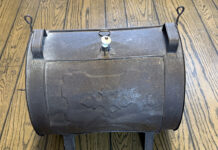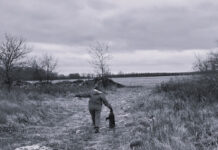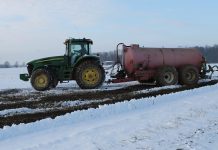Corn diseases can affect both grain and forage quality requiring a multi-prong approach to managing feed quality. DON, also known as Vomitoxin, can cause significant feed quality challenges in both silage and grain. Other foliar diseases cause fewer grain quality issues unless they kill the corn plant prematurely, lowering test weight.
Foliar disease can cause feed quality issues in silage, however. Tar spot is the most concerning as it is an aggressive disease that can kill corn plants rapidly, leading to silage moisture that is too low for proper fermentation.
Lowered digestibility
Even when a foliar disease does not kill the corn plant, it can it lower the digestibility of the corn silage decreasing the energy and milk per ton.
When a corn plant is infected with a foliar disease, its natural response to fight off the disease includes hardening the cell walls around the infection so that the disease does not spread further along with the death of plant tissue in the infected area. As the cell walls around the disease thicken, they become less digestible and so does the dead plant tissue in the diseased area, lowering the quality of your silage.
Managing disease
Management of corn diseases starts with hybrid selection, but for emerging diseases such as tar spot and DON, there may not be resistance ratings available in the seed catalogs. Selecting hybrids that have good disease resistance for gray leaf spot and Northern corn leaf blight is your first step so that those diseases are managed through plant genetics. You can then discuss with your seed salesman what they are experiencing for tar spot resistance and DON resistance.
DON is an extra-challenging disease for silage production because the fungus Fusarium graminearum can infect both the stalk, causing stalk rot, and the DON toxin along with infecting the ear, causing cob and grain rot, along with DON toxin. Once the hybrids with the best resistance to meet your needs have been selected, fungicide selection for the diseases you may need to manage can be determined.
Systems-based approach
With your support from the Ohio Corn Marketing Board and Ohio Dairy Research Fund, OSU Extension and OSU Plant Pathology have been researching a systems-based approach to DON management. This systems-based approach includes hybrid resistance screening of both corn grain and corn silage, hybrid infection reaction characterization, fungicide application method screening, weather modeling to predict disease levels and post-harvest cleaning of corn grain.
Our first hybrid screening project for DON was done in 2023 with only corn grain, but in 2024, we conducted a screening of both grain and silage hybrids. We will continue this program in 2025.
The grain screening results can be used to help with hybrid selection for both grain and silage, but corn silage can have DON toxins from both the grain and the stalk.
There is no correlation between high amounts of DON in the stalk and high quantities of DON in the grain and ear. The plant resistance traits for these two areas of disease infection are probably also different, so there is a chance that a corn hybrid with partial resistance to DON development in the ear may not have resistance to DON development from stalk rot.
In 2024, we lost half of our silage screening plots due to flooding after planting at the research station. This led to us only having results from the Enogen plots which were grown in a different area of the farm to maintain the stewardship guidelines.
These hybrids ranged from 0.06 ppm DON to 1.46 ppm DON. Of the 11 hybrids submitted, three of them averaged greater than 1 ppm, and seven averaged less than 0.5 ppm. The goal for high-producing dairy cows is to keep the complete ration DON below 1 ppm. Hybrid results will be published in late January through Buckeye Dairy News.
The corn grain hybrid screening project had 80 hybrids submitted in 2023 and 90 hybrids submitted in 2024. DON levels in 2023 were much higher than in 2024. Of the 80 hybrids submitted for evaluation, 24 of them had DON levels greater than 5 ppm in at least one of the three locations, and 28 hybrids averaged less than 2 ppm across the three locations.
The DON levels were much lower in 2024 with the two locations we have completed the data analysis on, only averaging 0.4 ppm DON across all 90 hybrids. The range however was from no DON detected to 3.7 ppm.
Grain hybrid DON screening data can be found at go.osu.edu/vomitoxin. Hybrid selection is an important first step to producing feed that has low levels of DON and other mycotoxins.













